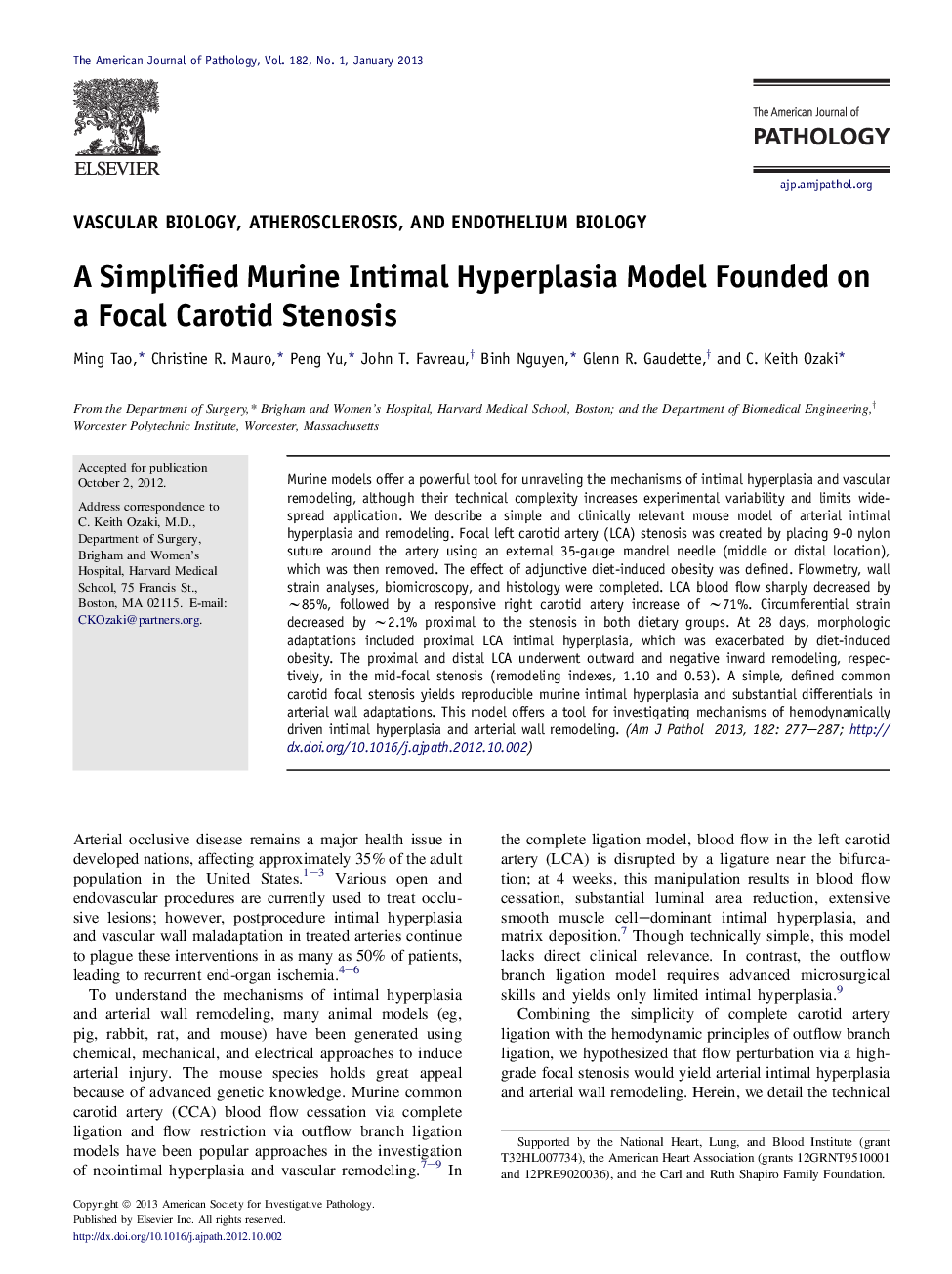| Article ID | Journal | Published Year | Pages | File Type |
|---|---|---|---|---|
| 5934795 | The American Journal of Pathology | 2013 | 11 Pages |
Abstract
Murine models offer a powerful tool for unraveling the mechanisms of intimal hyperplasia and vascular remodeling, although their technical complexity increases experimental variability and limits widespread application. We describe a simple and clinically relevant mouse model of arterial intimal hyperplasia and remodeling. Focal left carotid artery (LCA) stenosis was created by placing 9-0 nylon suture around the artery using an external 35-gauge mandrel needle (middle or distal location), which was then removed. The effect of adjunctive diet-induced obesity was defined. Flowmetry, wall strain analyses, biomicroscopy, and histology were completed. LCA blood flow sharply decreased by â¼85%, followed by a responsive right carotid artery increase of â¼71%. Circumferential strain decreased by â¼2.1% proximal to the stenosis in both dietary groups. At 28 days, morphologic adaptations included proximal LCA intimal hyperplasia, which was exacerbated by diet-induced obesity. The proximal and distal LCA underwent outward and negative inward remodeling, respectively, in the mid-focal stenosis (remodeling indexes, 1.10 and 0.53). A simple, defined common carotid focal stenosis yields reproducible murine intimal hyperplasia and substantial differentials in arterial wall adaptations. This model offers a tool for investigating mechanisms of hemodynamically driven intimal hyperplasia and arterial wall remodeling.
Related Topics
Health Sciences
Medicine and Dentistry
Cardiology and Cardiovascular Medicine
Authors
Ming Tao, Christine R. Mauro, Peng Yu, John T. Favreau, Binh Nguyen, Glenn R. Gaudette, C. Keith Ozaki,
